I am interested in memory bottleneck, and trying to figure out when variables are loaded into L1 data cache.
Is there any helpful tool to monitor the content in L1 cache? I want to know whether a varaible has been cached or not.
For example, here's simple funtion:
void fun(){
char c1_loc='a';
int i_loc=1;
char c2_loc='b';
double d_loc=2;
char c3_loc='c';
float f_loc=3;
char c4_loc='d';
short s_loc=4;
}
memory layout of this function:

I could get memory layout of the function with GDB, but how could I know which variables are in the same cache-line? In other words, I want to know from where cache-line start to load.
My machine is Intel-Core-I7-10710U, and the L1 data cache is 32KB, cacheline is 64B.